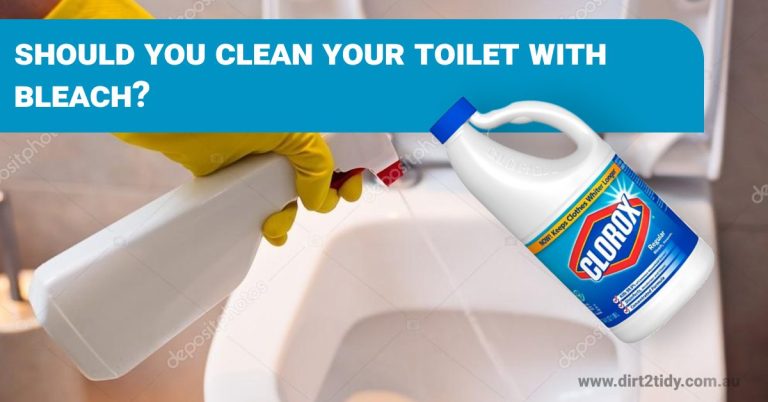Table of Contents
Introduction
When it comes to domestic cleaning, we’ve all heard a variety of tips and tricks passed down through generations or shared by friends and family. However, not all of these cleaning practices are as effective—or as safe—as they might seem. In fact, some common cleaning beliefs can lead to wasted effort, damaged surfaces, or even health risks. In this article, we’ll debunk some of the most prevalent cleaning myths and reveal the reality behind them, helping you clean your home more effectively and safely.

Myth vs Reality:
Myth 1: “Bleach Cleans Everything”
Reality: Bleach is a powerful disinfectant, but it’s not a universal cleaner.
Bleach is often touted as the ultimate cleaning solution for almost any surface, but the reality is that while bleach is excellent for disinfecting, it’s not necessarily a good cleaner. Bleach doesn’t remove dirt or grime—it sanitizes surfaces by killing germs, bacteria, and viruses.
- Use Bleach Appropriately: Bleach is best used on non-porous surfaces like toilets, sinks, and tiles to disinfect. It should not be used on fabrics (unless diluted for laundry), wood, or porous surfaces as it can cause damage or discoloration.
- Clean First, Disinfect Second: For effective cleaning, first remove dirt and grime with soap and water or a suitable cleaner, then use bleach or another disinfectant to sanitize the area.
[lead-form form-id=1 title=Fill to Get Free Cleaning Checklist]
Myth 2: “Vinegar is the Best All-Purpose Cleaner”
Reality: Vinegar is versatile but not suitable for all surfaces.
Vinegar is a popular natural cleaning solution due to its acidic nature, which makes it effective for cutting through grease, removing stains, and deodorizing. However, vinegar isn’t safe for every surface.
- Avoid Using Vinegar On: Natural stone surfaces like granite and marble, as well as hardwood floors, can be damaged by the acidity of vinegar. It can dull or etch these materials over time.
- Where Vinegar Works Best: Vinegar is excellent for cleaning glass, stainless steel, and tile. It can also be used in laundry to soften fabrics and remove odors.

Myth 3: “Feather Dusters Are Effective for Dusting”
Reality: Feather dusters often spread dust rather than remove it.
Feather dusters may look elegant, but they’re not the most effective tool for dusting. Instead of trapping dust, they tend to push it around, allowing it to resettle on surfaces.
- Best Dusting Tools: Microfiber cloths are superior for dusting because they attract and hold dust particles thanks to their electrostatic charge. They’re also washable and reusable, making them an eco-friendly option.
- Tip: Dampen the microfiber cloth slightly for better dust capture, especially on electronic screens or wood surfaces.
You may also like to read about-“The Ultimate Guide to Finding Reliable Domestic Cleaning Services”
Myth 4: “Hot Water Cleans Better Than Cold Water”
Reality: Hot water isn’t always the best option for cleaning.
While hot water can enhance the effectiveness of some cleaning agents, it’s not universally better. In fact, using hot water can set certain stains, making them harder to remove.
- When to Use Cold Water: Cold water is best for rinsing off protein-based stains like blood or eggs, as hot water can cause these stains to coagulate and bind to fabric fibers.
- Hot Water Use: Hot water is effective for dissolving grease, sanitizing dishes, and cleaning certain fabrics. However, always check the care label on clothes to determine the correct water temperature for washing.

Myth 5: “More Detergent Means Cleaner Clothes”
Reality: Using more detergent can lead to residue buildup and less effective cleaning.
It’s a common belief that adding extra detergent to your laundry will result in cleaner clothes, but this isn’t the case. Excess detergent can actually leave residue on your clothes and in your washing machine, causing fabrics to feel stiff and leading to odors in the machine.
- Correct Dosage: Follow the detergent manufacturer’s recommendations for the right amount of detergent based on the size of your load and the level of soiling. Modern washing machines are designed to use less water and require less detergent.
- Rinse Well: If you suspect residue buildup, run an extra rinse cycle to remove any remaining detergent from your clothes.
You may also like to read about-“Why Hiring a Domestic Cleaning Service is the Best Decision You’ll Ever Make”
Myth 6: “Newspapers Are Best for Cleaning Windows”
Reality: Modern newspapers can leave streaks and ink residue on glass.
The practice of using newspapers to clean windows dates back to when newspapers were made with thicker paper and different types of ink. Today, most newspapers are printed with soy-based ink on thinner paper, which can smear and leave streaks on glass surfaces.
- Better Alternatives: Use a microfiber cloth or a squeegee for streak-free windows. These tools are more effective at removing dirt and moisture without leaving behind ink or fibers.
- DIY Glass Cleaner: For a homemade glass cleaner, mix equal parts vinegar and water, and spray it onto the glass. Wipe clean with a microfiber cloth for a sparkling finish.
Myth 7: “Cleaning Products Work Instantly”
Reality: Most cleaning products need time to work effectively.
Many people spray a cleaner on a surface and immediately wipe it off, expecting it to work instantly. However, most cleaning products need a few minutes to break down dirt, grime, and germs.
- Follow Instructions: Always read the label on your cleaning products to understand the recommended dwell time—this is the amount of time the product should remain on the surface before wiping.
- Disinfecting Tip: For disinfectants to be effective, they typically need to stay on the surface for several minutes to kill bacteria and viruses effectively. Wiping too soon can reduce their effectiveness.
Myth 8: “Wood Furniture Should Be Cleaned with Polish Every Time”
Reality: Frequent polishing can damage wood furniture over time.
While it’s important to keep wood furniture clean, using polish every time you clean can lead to a buildup of residue that attracts more dust and dirt, dulling the wood’s finish.
- Dust Regularly, Polish Occasionally: Dust wood furniture regularly with a microfiber cloth. Use furniture polish sparingly—only a few times a year—to maintain the wood’s shine without causing buildup.
- Alternative Method: For regular maintenance, a damp microfiber cloth is usually sufficient for removing dust and smudges from wood surfaces.
You may also like to read about-“Domestic Cleaning Services: A Must – Have for Busy Professionals”
Myth 9: “You Should Clean Carpets Only When They Look Dirty”
Reality: Waiting until carpets look dirty can shorten their lifespan.
Carpets may not show visible dirt for a while, but they can harbor dust, allergens, and bacteria long before they appear dirty. Regular cleaning helps maintain the carpet’s appearance and extends its life.
- Vacuum Regularly: To keep your carpets in good condition, vacuum at least once a week, and more frequently in high-traffic areas or if you have pets.
- Schedule Deep Cleaning: Professional deep cleaning should be done at least once a year, or more often if needed, to remove deep-seated dirt and allergens.

Myth 10: “Antibacterial Cleaners Are Always Better”
Reality: Overuse of antibacterial cleaners can contribute to antibiotic resistance.
Antibacterial cleaners are effective at killing bacteria, but their overuse can contribute to the development of antibiotic-resistant bacteria. For most everyday cleaning tasks, regular soap and water or a basic all-purpose cleaner are sufficient.
- When to Use Antibacterial Cleaners: Reserve antibacterial products for high-touch areas, during illness, or in environments where sanitation is critical, such as kitchens and bathrooms.
- Everyday Cleaning: For routine cleaning, regular household cleaners or natural alternatives like vinegar and baking soda are usually effective and safer for long-term use.
Conclusion
Understanding the truth behind common domestic cleaning myths can help you clean your home more efficiently, safely, and effectively. By debunking these myths, you can avoid common pitfalls and adopt cleaning practices that genuinely work, ensuring a cleaner, healthier home. The next time you tackle your cleaning routine, remember these insights to get the best results with less effort and fewer risks.







